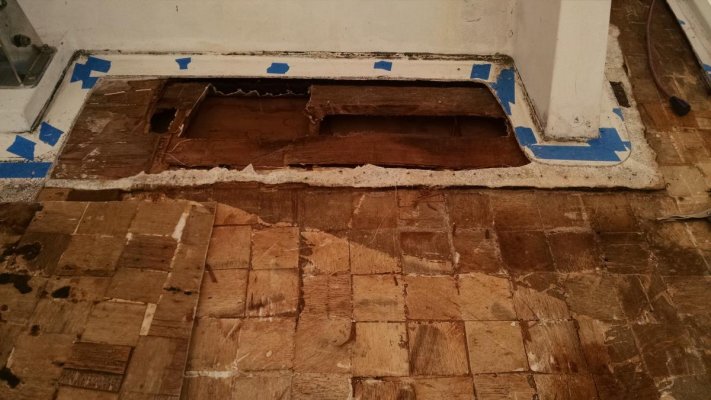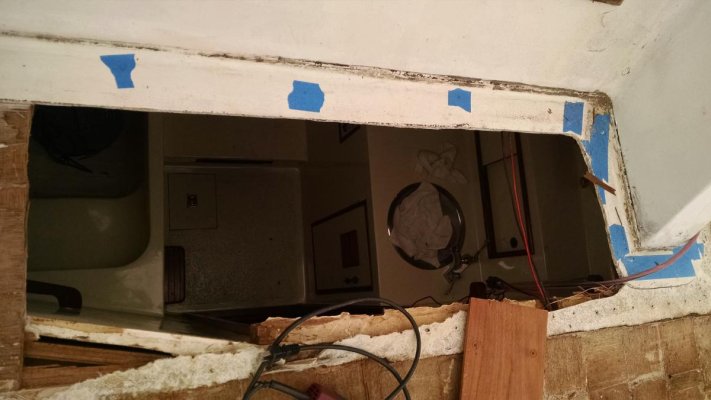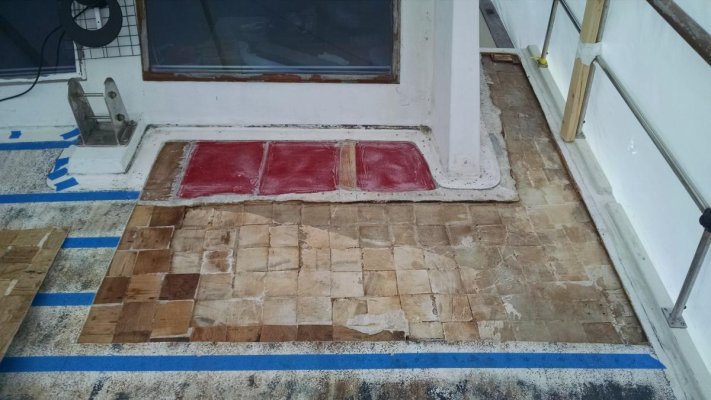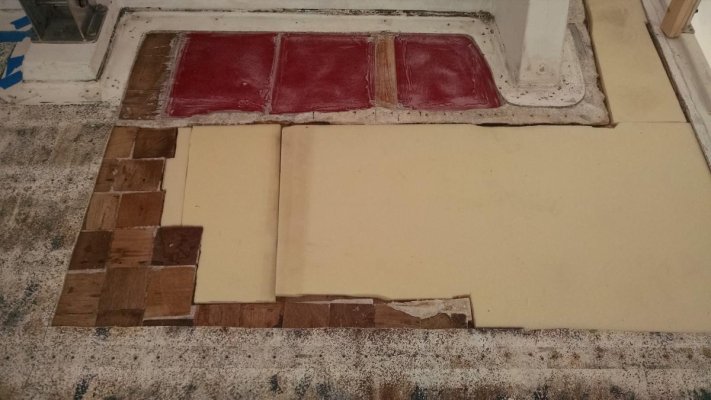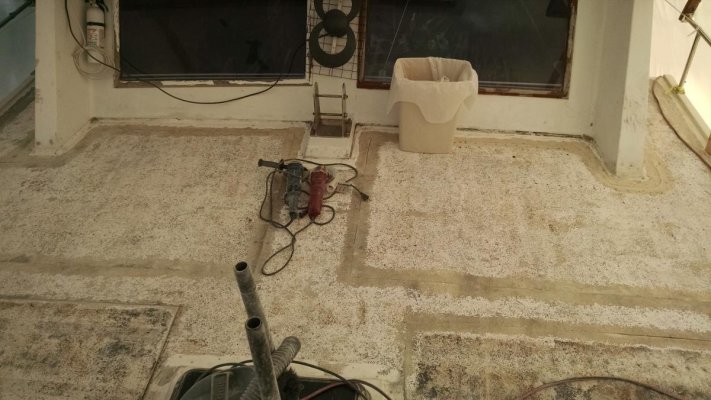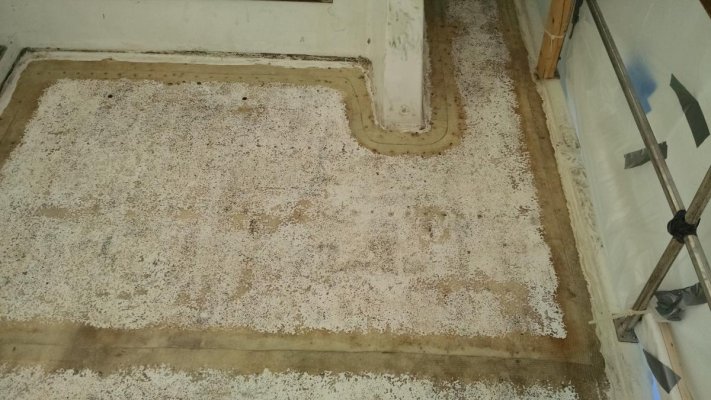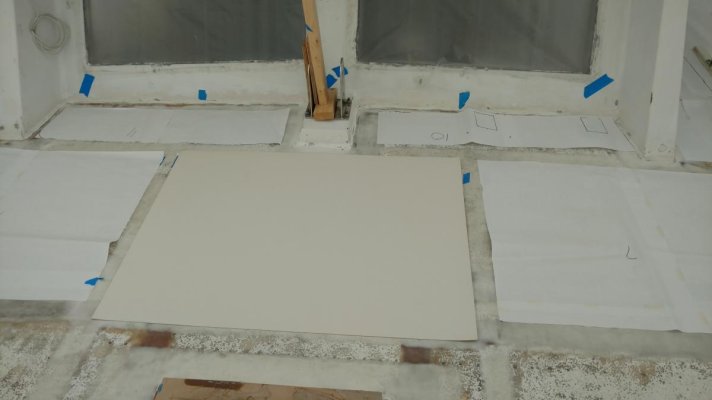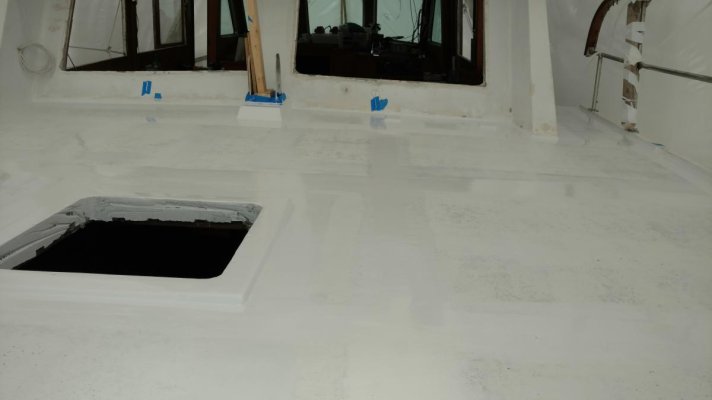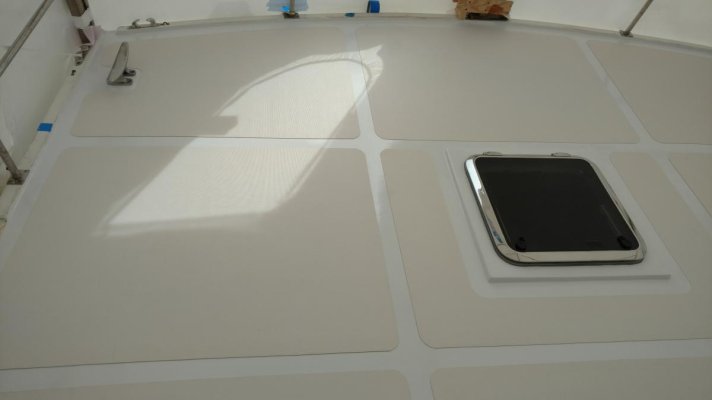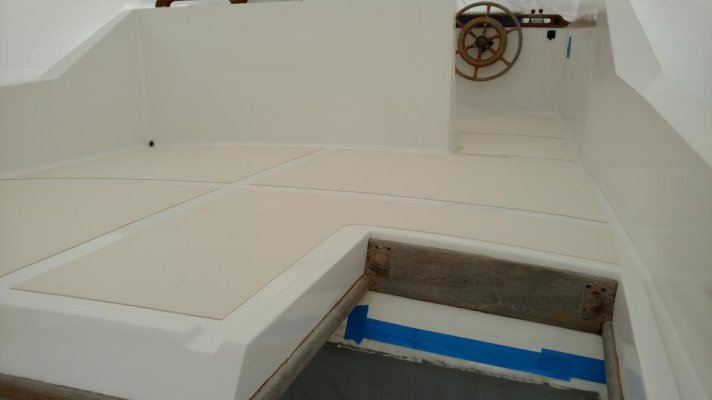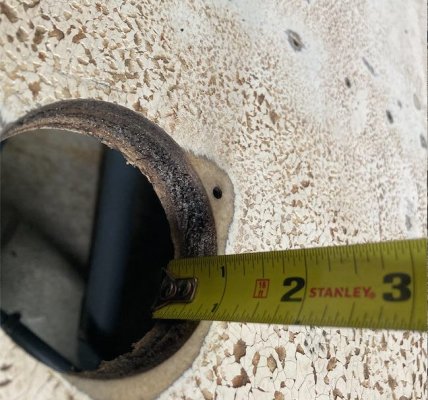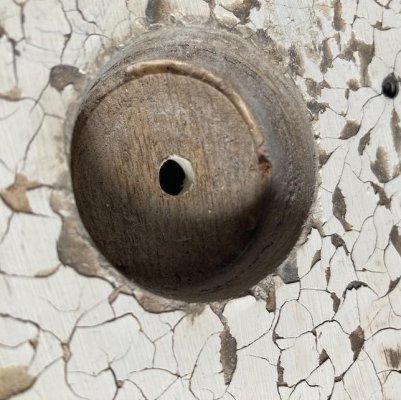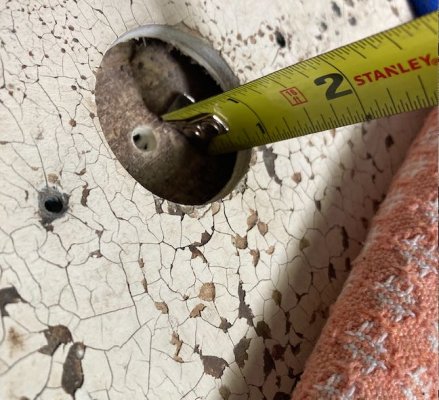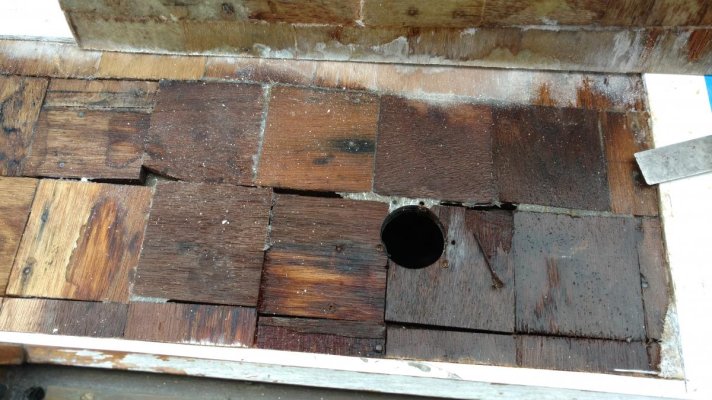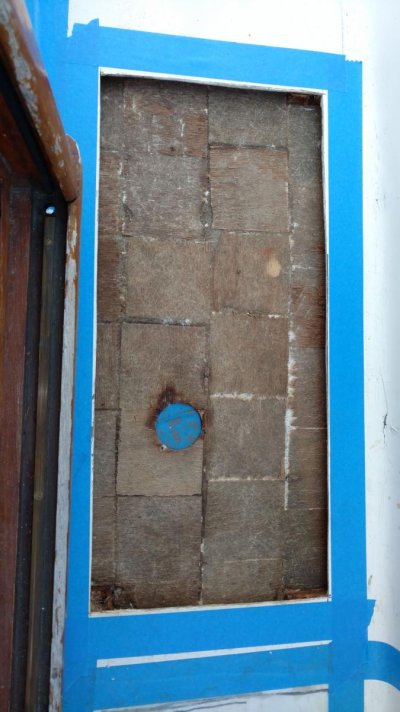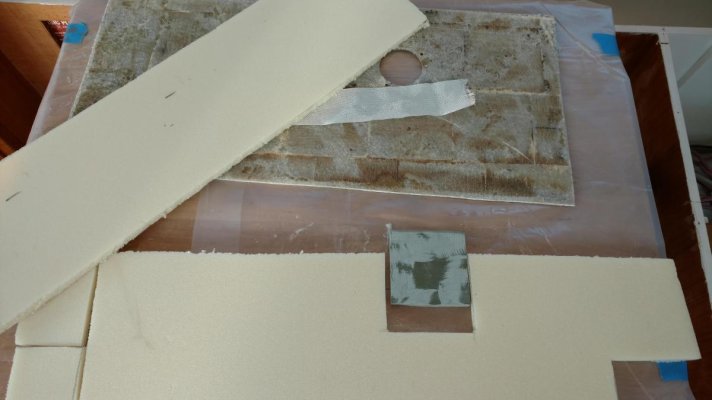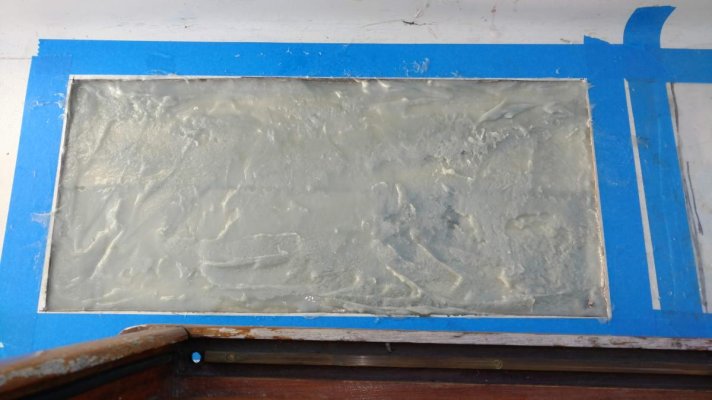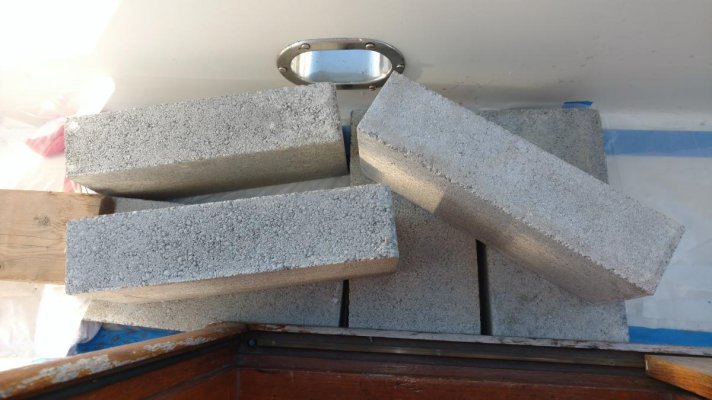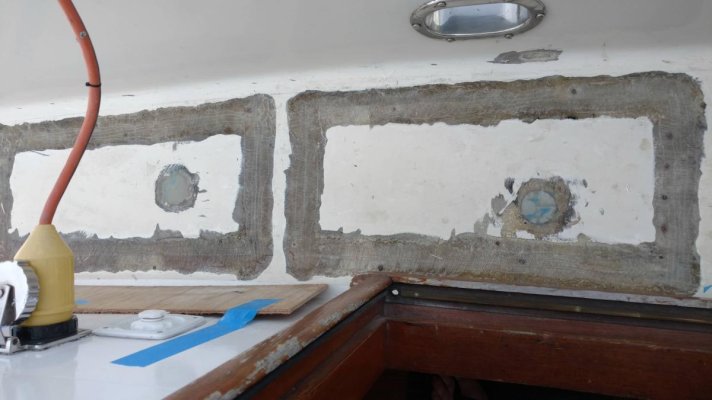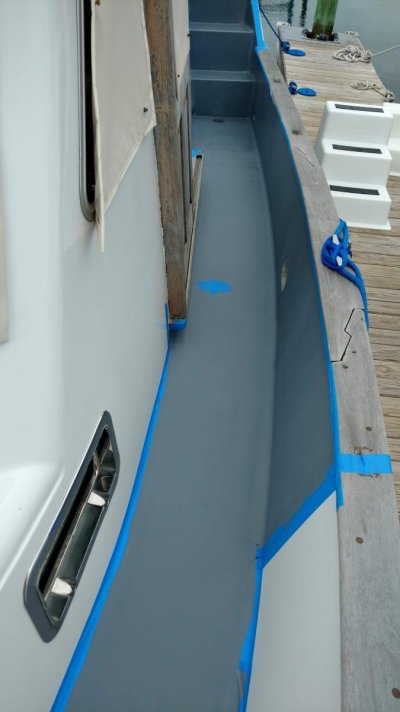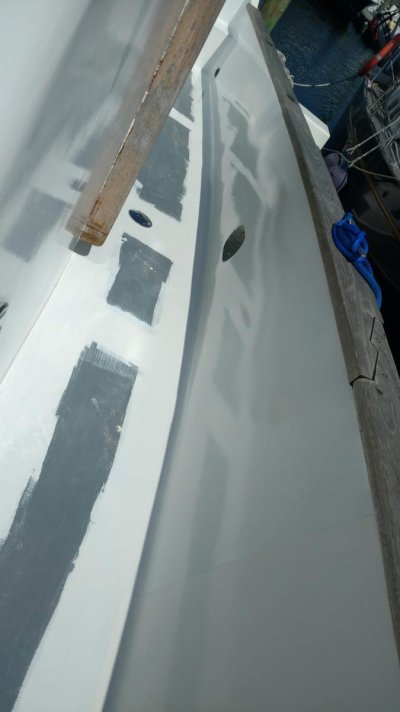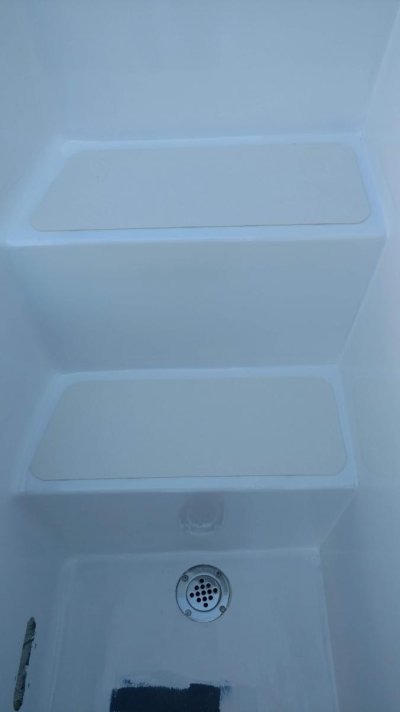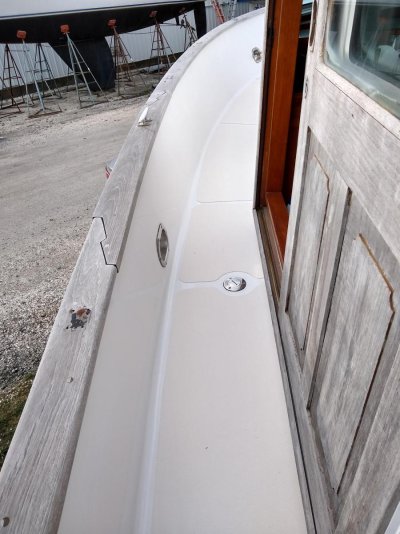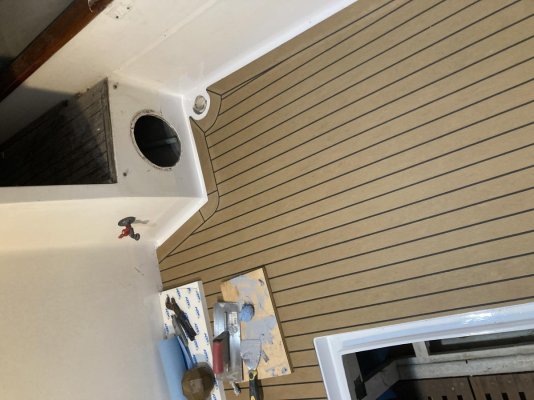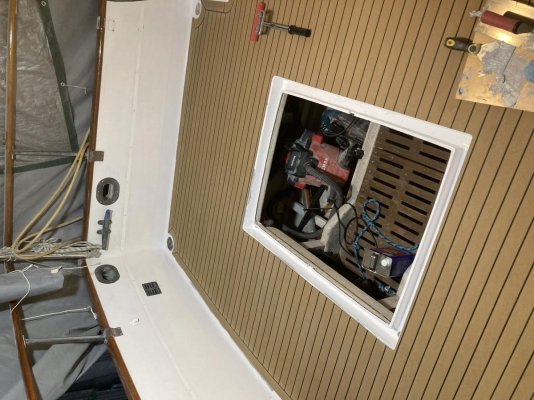@Polaris: Yeah, I really should pick up a moisture meter, especially as I will be continuing on to the side/fwd and upper decks over the next two seasons. My "field of holes" was meant as exploratory but will ultimately give me more strength overall bonding the top and bottom of the deck together. I have been "cooking" the deck for the last few weeks with a baseboard heater in the underside (watching the electric meter spin...) so the deck, at my sample holes is pretty dry. Question is, is it intact. In the area where I had mush, or nothing left, I will be dropping in some more holes to define the extent of damage, which seems mainly to be around the emergency tiller access port. I do have quite a bit of good/solid so not looking to go as wide as you went. Quite a job there! Do you have additional photos of glass over and ultimate finish?
@CharlieO, @Comodave, The decking was installed piece by piece, glued and screwed then caulked but would have essentially come off in one entire piece if I had not cut it up to make removal easier. The caulking kept the boards together but the glue between decking and subdeck was shot... only screws were holding the boards down and being that 90%+ of my bungs were gone, it made for fast work of removing the screws...
I will keep "cooking" the aft deck as I have the hatches in my basement for proof of concept of whatever will be the final finish.. will post progress.
